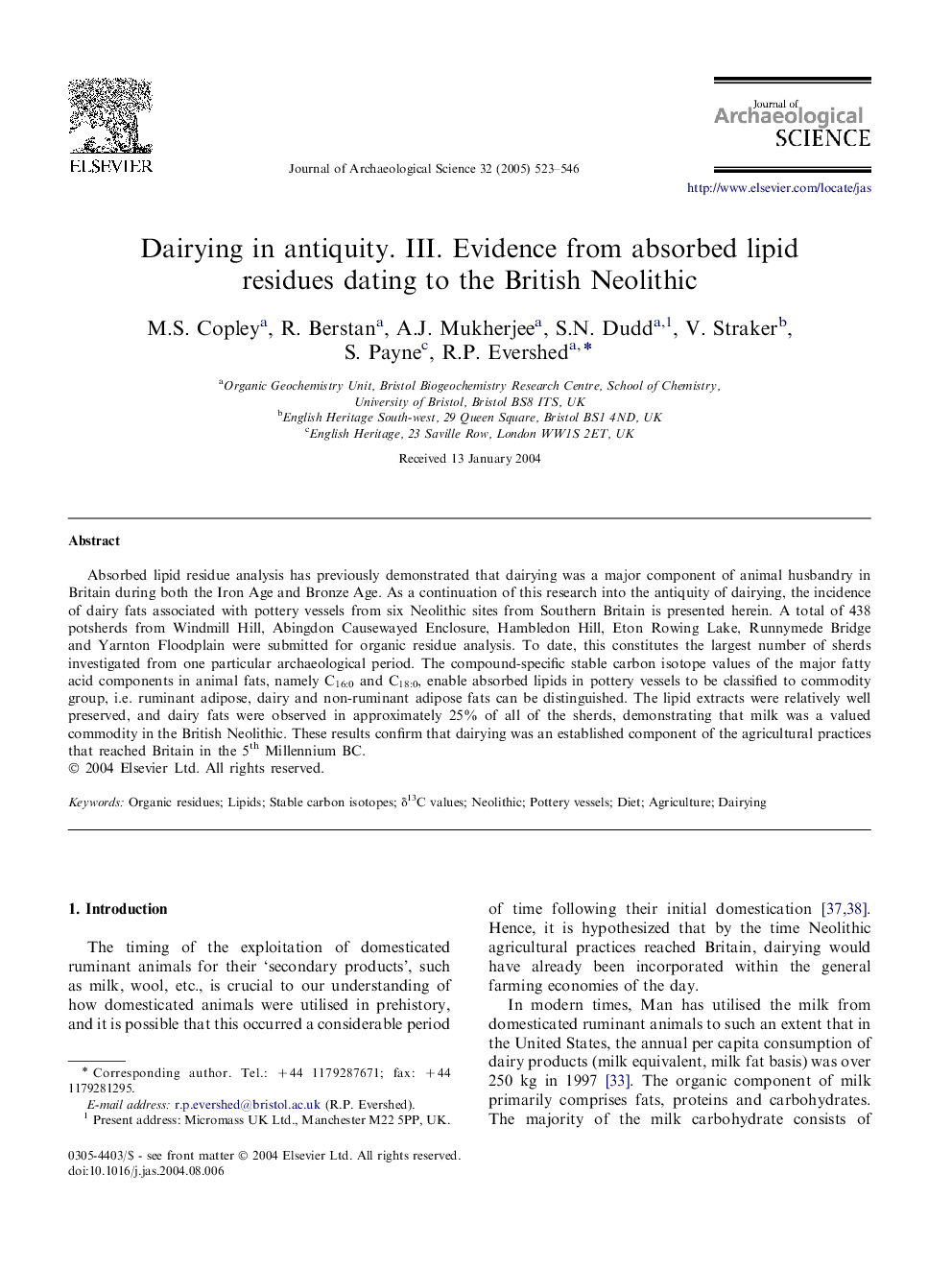| Article ID | Journal | Published Year | Pages | File Type |
|---|---|---|---|---|
| 10499554 | Journal of Archaeological Science | 2005 | 24 Pages |
Abstract
Absorbed lipid residue analysis has previously demonstrated that dairying was a major component of animal husbandry in Britain during both the Iron Age and Bronze Age. As a continuation of this research into the antiquity of dairying, the incidence of dairy fats associated with pottery vessels from six Neolithic sites from Southern Britain is presented herein. A total of 438 potsherds from Windmill Hill, Abingdon Causewayed Enclosure, Hambledon Hill, Eton Rowing Lake, Runnymede Bridge and Yarnton Floodplain were submitted for organic residue analysis. To date, this constitutes the largest number of sherds investigated from one particular archaeological period. The compound-specific stable isotope values of the major fatty acid components in animal fats, namely C16:0 and C18:0, enable absorbed lipids in pottery vessels to be classified to commodity group, i.e. ruminant adipose, dairy and non-ruminant adipose fats can be distinguished. The lipid extracts were relatively well preserved, and dairy fats were observed in approximately 25% of all of the sherds, demonstrating that milk was a valued commodity in the British Neolithic. These results confirm that dairying was an established component of the agricultural practices that reached Britain in the 5th Millennium BC.
Related Topics
Physical Sciences and Engineering
Materials Science
Materials Science (General)
Authors
M.S. Copley, R. Berstan, A.J. Mukherjee, S.N. Dudd, V. Straker, S. Payne, R.P. Evershed,
